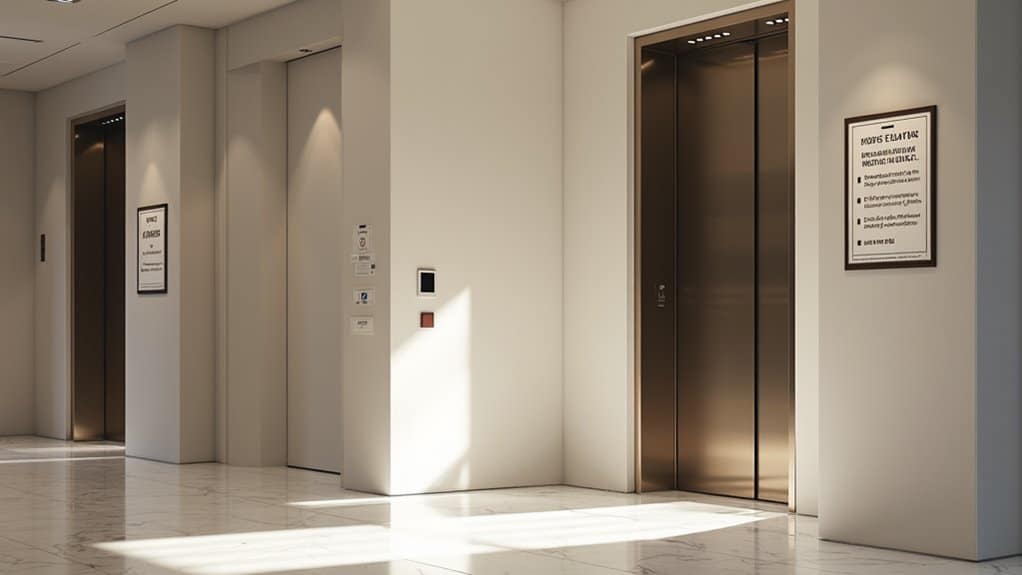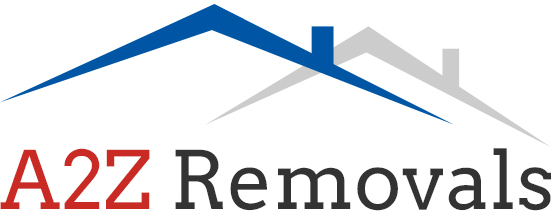
Understanding Local House Removal Regulations
Understanding local house removal regulations is crucial for a hassle-free move. Familiarise yourself with health, safety, and building codes in your area. Make sure to obtain any necessary permits from your local council and comply with parking and loading regulations to avoid fines.
It's wise to schedule your move well in advance and discuss specific rules with your movers, particularly about noise restrictions and logistics. For instance, if you live in a busy street, you might need to arrange for a parking bay to be suspended. Ignoring these details can lead to complications on moving day.
Stay tuned for practical tips to help you navigate this process smoothly.
Key Takeaways
- Familiarise yourself with local health, safety, and building regulations to ensure your house removal is compliant.
- Secure the necessary demolition permits from your local council to guarantee a safe and legal removal process.
- Check the certifications of your movers to ensure they meet local regulations for the safe transport of your belongings.
- Follow waste management rules, including the proper disposal of hazardous materials and general waste.
- Apply for moving permits at least five days in advance to avoid fines and ensure there's enough parking available.
Overview of Local Regulations
When it comes to house removal, understanding local regulations is crucial for a smooth process. Each area has specific criteria that dictate how you can demolish a structure, so you'll need to familiarise yourself with local health, safety, and building codes, which can vary significantly.
Before you begin, obtain the necessary demolition permits from your local council. This often includes submitting a site plan, proof that utilities have been disconnected, and a grading plan. If you need access to private land for debris removal, be prepared to provide legal documentation.
Safety is also a top priority. Local authorities may intervene if a structure poses immediate risks, and you must comply with safety regulations during the removal process. Inspectors have the authority to halt work if they identify any safety concerns. Additionally, ensure that you secure the appropriate licenses and permits required for your operations, as these can significantly impact your compliance status.
Lastly, ensure you comply with local business licensing regulations, as these can affect your ability to operate within your area. Being aware of these regulations will help you navigate the house removal process effectively and avoid unnecessary delays.
Designated Moving Times
Understanding local regulations is crucial when planning your house move. Generally, house movers are permitted to operate between 7 am and 9 pm, including weekends.
If you're thinking about a late-night move, some removal companies do offer 24/7 services, but be mindful that this may incur additional charges. It's wise to pre-book to ensure you secure your desired team during these hours. Early booking is recommended for best crew availability, particularly for night moves. Many removal services, especially during busy periods, may have limited availability.
Moving restrictions can significantly affect your plans. Leaving tasks until the last minute can lead to problems, particularly during late hours when access to buildings mightn't be guaranteed.
To avoid complications, collect your keys early and confirm all arrangements with your estate agents or landlords in advance.
For local moves, it's best to aim for a lead time of 3 to 4 weeks, especially during busy periods like weekends or at the beginning and end of the month.
Off-peak moves may allow for shorter notice, but remember that last-minute bookings can lead to increased costs and fewer available options.
Elevator Usage Guidelines

Managing elevator usage during your house move is crucial to prevent delays. First, check if your building has specific lifts allocated for moving. Regular passenger lifts may not be available, so it's wise to reserve the correct one in advance. This ensures it's ready when you need it and allows building management to prepare, such as locking off the lift and protecting its walls.
Ensure your movers have the necessary access and follow any check-in procedures required by the building. Remember, moving is typically restricted to certain days and times, so plan your move accordingly. Additionally, make sure to comply with advance reservations to avoid any potential penalties and ensure a seamless experience.
Safety is key when using the lift. Be mindful of weight limits and never exceed the posted capacity. If you hear any unusual noises or see damage, report it to facility management straight away.
Familiarise yourself with emergency procedures in case of entrapment, and avoid using the lift during emergencies like fires or power cuts. By following these guidelines, you can help ensure a smooth and efficient move while prioritising safety.
Parking and Loading Requirements
How can you ensure a smooth moving experience with minimal disruptions?
It's crucial to understand the parking and loading requirements in your area. Local regulations typically set minimum parking standards based on property type. For residential properties, you generally need at least one parking space for each unit, plus extra spaces for additional bedrooms. Additionally, confirming insurance documents is essential for protecting your belongings during the move.
For commercial properties, the requirement is often three spaces for every 92 square metres. Additionally, any expansion of use or structure requires compliance with off-street parking standards if it exceeds 25% of the existing floor area.
You could be eligible for parking exemptions if your lot was established before 1995 or if you're expanding by 25% or less while keeping existing parking. Moreover, if your building was constructed before 1944, you mightn't need additional parking for a change of use.
If you manage multiple properties, look into shared parking options. These allow different uses to share parking spaces, provided you conduct a shared parking study and enter a legal agreement. This can simplify your parking needs and help reduce congestion on moving day.
Always check that your parking areas comply with local standards and are accessible for everyone. By clarifying these requirements in advance, you can significantly enhance your moving experience.
Noise Control Measures

Noise control measures are crucial for ensuring a smooth moving experience, particularly in busy urban areas.
When planning a house removal, it's important to understand the local noise regulations related to construction activities. A noise mitigation plan should be in place to outline strategies for minimising sound disturbances, especially for noisy tasks like pile driving and blasting. Additionally, it is essential to be aware of the stricter decibel limits now enforced for construction activities due to recent amendments.
Before commencing work, contractors must create and display this plan at the construction site. Inspectors will verify compliance, and non-adherence can result in penalties or the shutdown of noisy equipment.
For mechanical equipment, individual units shouldn't exceed 42 decibels, while the total noise must remain below 45 decibels.
It's vital to ensure that external noise levels don't exceed the daytime average of 65 decibels, particularly in residential areas.
Waste Disposal Regulations
When preparing for a house move, it's crucial to dispose of materials responsibly.
Familiarise yourself with local waste management regulations to ensure you're recycling unwanted items correctly and not adding to landfill waste unnecessarily.
For example, check if your local council offers a recycling service for electronics or furniture. Additionally, consider hiring licensed clearance services that ensure proper waste disposal practices to avoid fines and penalties.
Responsible Packing Material Disposal
Understanding the regulations for responsible packing material disposal is crucial for both homeowners and businesses in the UK. When packing your belongings, opt for eco-friendly options like biodegradable materials. These not only reduce environmental impact but also often align with local waste disposal regulations.
Be sure to follow specific guidelines for hazardous materials, as incorrect disposal can result in significant fines. For example, substances such as hydrochloric acid mustn't be packaged under standard regulations. If you need to transport such materials, ensure they're in UN standard containers and meet all absorbent material requirements.
Household waste generally has different regulations, offering a bit more leeway. However, it's still important to stick to local collection schedules and use approved containers for safe disposal.
Keep an eye on weight limits and packaging sizes to avoid issues during collection.
Local Waste Management Guidelines
Navigating local waste management guidelines is crucial to ensure compliance with disposal regulations.
Firstly, place your waste collection bins out by 6:00 a.m. on your designated service day, as collections occur weekly. After collection, remove your bins from the curb within 12 hours to prevent any potential fines.
For hazardous waste, proper handling is essential. This includes items such as motor oil, batteries, and cleaning products.
Never pour these down the drain or throw them in regular rubbish. Instead, check if your local council provides household hazardous waste (HHW) collection services. For instance, residents in Riverside County can utilise the Agua Mansa Permanent HHW Facility, which is open every Saturday from 9:00 a.m. to 2:00 p.m. for safe disposal.
When disposing of general waste, ensure items are wrapped in sturdy plastic bags and stored securely.
Following these guidelines helps keep our communities clean and protects the environment. Stay informed and responsible for effective waste management in your area.
Recycling Unwanted Items Properly
Effective waste management is crucial for recycling unwanted items properly. Start by sorting your items into three clear categories: recyclable, donatable, and hazardous. This straightforward approach ensures everything is disposed of correctly.
When it comes to hazardous materials, such as chemicals, batteries, and light bulbs, it's essential to handle them with care. You can't simply place them in your regular recycling bin. Instead, check with local waste management services or recycling centres for the best disposal options. Many areas provide specific drop-off points for these items, ensuring they're disposed of safely and responsibly.
Additionally, it's important to be aware of the exemptions and alternative controls under UK waste regulations. Some materials may be exempt if they're reused directly in production processes without going through reclamation.
However, if you're recycling hazardous waste, remember that all relevant regulations must still be followed.
Obtaining a Moving Permit

Securing a moving permit is a crucial part of your relocation process and typically involves a few straightforward steps.
To ensure compliance with local parking regulations, follow these guidelines for your permit application:
- Application Submission: Submit your permit application via your local council's website or relevant department.
- Advance Notice: Aim to apply at least 5 days before your move, or ideally 2 weeks in advance, to ensure "No Parking" signs are in place on time.
- Costs: Be prepared to pay between £20-£80 for a one-day permit, with additional fees for extra days or larger spaces.
Obtaining a moving permit helps you avoid fines (for example, a £115 ticket in London) and secures a reserved parking space for your removal van.
This convenience saves you time and reduces costs by minimising the duration your moving company spends searching for parking.
Some removal firms may even assist you with the permit application, so don't hesitate to ask for help.
With everything sorted, you'll ensure a smoother and more efficient moving experience.
Key Regulations in New York City
When planning a house removal in New York City, it's crucial to understand the key regulations involved. If you're considering removing a wall, you'll likely need a permit. While some minor removals mightn't require one, it's essential to consult a qualified architect or engineer to determine if the wall is load-bearing or fire-rated, as this affects permit requirements.
In residential properties, there are specific limitations on which interior walls can be removed without a permit, including the size and percentage of the wall being taken out. Be aware that certain areas, such as the Special Hudson Yards District, may have additional restrictions.
If you're planning a demolition, securing the necessary demolition permits is essential. You must demonstrate genuine intentions and prove that the demolition is part of a new development that will provide at least 20% more housing.
Additionally, you'll need to be informed about the relocation and compensation requirements for any tenants affected by the demolition.
Common Building Rules

When planning your move, it's important to be aware of designated moving days and the lift capacity limits in your building.
These regulations can significantly affect the timing and efficiency of your move, so it's wise to consult your building management beforehand. Adhering to these common building rules ensures a smooth transition and helps you avoid potential fines or disruptions.
For instance, if the lift can only accommodate a certain number of people or weight, you may need to plan multiple trips. Keeping these factors in mind will help your move go off without a hitch.
Designated Moving Days
Many buildings in the UK have designated moving days to simplify the process and minimise disruption for all residents. These days help keep communal areas accessible and ensure Moving Day Protocols are adhered to.
Here are a few important points to consider:
- Specific moving days and times are scheduled to avoid busy periods.
- Evening and weekend moves may not be allowed to reduce noise levels.
- You'll need to liaise with building management for the necessary permissions.
As a resident, it's your duty to follow these regulations. Ignoring the scheduled moving times could result in fines or delays, so it's crucial to plan ahead.
Always check with your building's management for their designated moving schedule, and ensure your moving company provides a Certificate of Insurance (COI).
Don't forget to inform your neighbours about your moving plans. Good communication can help avoid misunderstandings and lead to a smoother moving experience for everyone.
Elevator Capacity Limits
Understanding elevator capacity limits is crucial for ensuring safe and efficient movement within your building. These limits usually range from 950 kg to 2,300 kg, depending on factors like building height and materials. Adhering to the British Standard BS EN 81-1 is essential, as it links elevator size with its capacity.
Whether in a commercial or residential setting, knowing the specific weight limits set by local regulations can help prevent accidents. To determine capacity, use the maximum loading method, which allocates about 0.14 square metres of space per person. The size of the elevator directly affects both passenger capacity and safe load limits.
Regular maintenance checks are vital to avoid overloading and ensure safety. It's also important to display maximum load limits clearly inside and outside the elevator car. This serves as a reminder of safety protocols and helps prevent mishaps.
Special Considerations for Movers
Movers navigate a complex array of regulations and certifications crucial for a smooth relocation. Understanding these requirements not only ensures compliance but also safeguards consumers during the moving process.
- If you're moving to another country, movers must register with the relevant authorities.
- After loading, movers are required to provide a bill of lading, which offers essential consumer protection.
- Always check that movers have the necessary certifications to prevent potential issues.
In addition to national regulations, local requirements are equally important. Movers operating within a single country must be certified by the appropriate regulatory body, which often sets maximum charges for their services.
Ensuring that your mover is certified means you're dealing with professionals capable of transporting your belongings safely.
For long-distance moves, make sure to receive a copy of "Your Rights and Responsibilities When You Move." This document contains crucial consumer protection information.
Always verify that your mover has the correct carrier permits. Remember, choosing certified movers not only provides peace of mind but can also save you money.
Take the time to research and make informed decisions during your relocation.
Planning and Coordination Tips

When planning your move, it's crucial to schedule well in advance to secure the necessary permits and avoid any last-minute stress.
Make sure to liaise with your building management or local authorities to understand the specific regulations you need to adhere to.
Keeping these communication channels open will help ensure a smooth transition to your new home.
Advance Move Scheduling
Planning your move well in advance can significantly cut down on stress and ensure a smoother transition. Giving yourself at least eight weeks' notice allows for better management of tasks and schedules, providing you with more flexibility.
Start by establishing a moving budget and creating a detailed timeline to keep everything on track.
Here are some key steps to consider:
- Research and book professional movers or services at least two months in advance.
- Start decluttering and organising non-essential items to lighten the load.
- Create a room-by-room inventory to help with accurate quotes and packing requirements.
Flexibility in scheduling is crucial, particularly for larger or specialised moves. By securing your moving date early, you can avoid the chaos and potential complications of last-minute arrangements.
For added convenience, consider moving during off-peak seasons to expand your options.
Don't forget to arrange for the disconnection and setup of utilities well in advance to avoid any last-minute issues.
Communicate With Management
Effective communication with management is crucial for ensuring a smooth moving process. Establishing clear communication channels allows you to provide updates that keep everyone informed and aligned. Start by creating a detailed plan that outlines your moving timeline and key tasks. Regularly check in with your team to identify and address any potential issues early on.
Here's a quick reference table for key communication strategies:
| Task | Action Required |
|---|---|
| Notify Essential Services | Inform utility providers of your new address |
| Coordinate With Movers | Research and confirm arrangements with movers |
| Update Records | Notify relevant authorities about your address |
| Plan for Final Readings | Schedule meter readings for moving day |
Remember to designate a no-pack zone for essential items and implement a clear labeling system for unpacking. By following these strategies, you'll improve communication with management and make the transition smoother. Being proactive will also help minimise stress on moving day.
Frequently Asked Questions
What Documents Are Needed for a Moving Permit Application?
For a moving permit application, you'll need to provide proof of ownership, insurance, and identification. Make sure to include detailed information about your route and schedule, as well as any additional permits that may be required by local regulations. For instance, if you're moving in a busy urban area, you might need to secure a parking suspension for your removal vehicle.
Are There Penalties for Moving Without a Permit?
Yes, there are penalties for moving without a permit, which fall under moving violations. However, some exemptions apply, such as when moving outside city limits if the Building Inspector considers it safe. It's important to stay informed!
Can I Move Furniture Outside of Designated Times?
In London, around half of noise complaints are linked to moving activities. You can't move furniture outside of designated times because of local noise regulations. Stick to the schedule to avoid fines and keep your neighbours content.
What Should I Do if My Move Gets Delayed?
If your move is delayed, take a moment to reassess your moving logistics and adjust your timeline accordingly. It's wise to budget for unexpected costs, such as temporary accommodation or extra removal services. Stay organised and keep everyone involved in the loop to ensure a smoother transition. For example, if you're facing a delay, consider booking a short-term rental or asking friends if you can stay with them until you can move into your new place.
How Can I Find a Reputable Moving Company?
To find a reputable moving company, start by checking customer reviews online. Ensure they have proper moving insurance and verify their credentials. Look for firms that offer in-home estimates, have professional affiliations, and maintain a good complaint history. This will help ensure you're selecting a reliable service. For example, a company with a high rating on Trustpilot and membership in a recognised association is likely a safer choice.
Conclusion
Navigating local house removal regulations can be tricky, but knowing the rules can simplify your move. Familiarise yourself with local guidelines, such as designated removal times, parking restrictions, and any specific rules for your building. For example, some areas may require permits for parking a removal van on the street.
Planning ahead is essential for a smooth relocation. Take the time to research these regulations and communicate clearly with your movers. This way, you can avoid unnecessary delays and ensure the process runs smoothly from start to finish. Happy moving!


